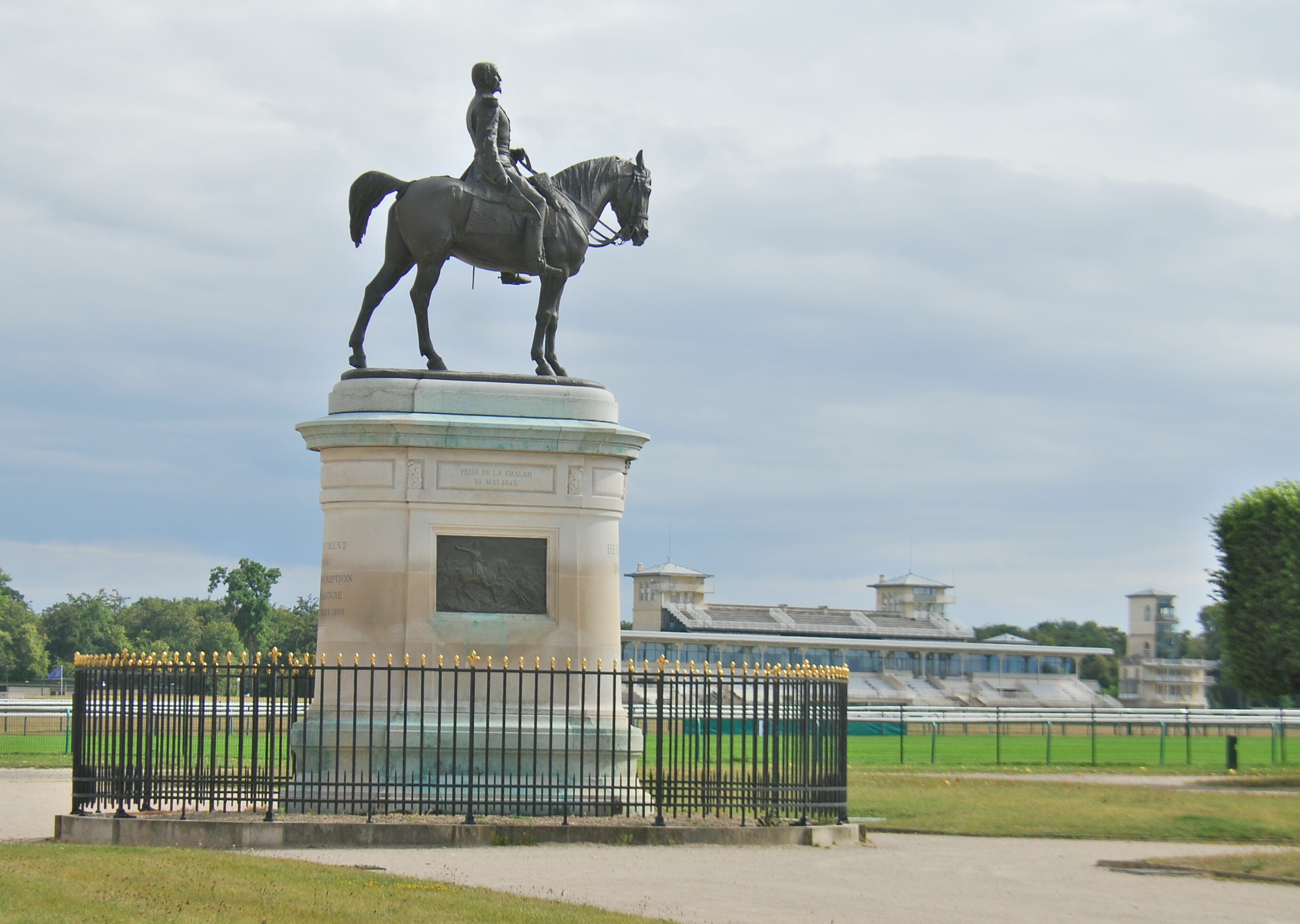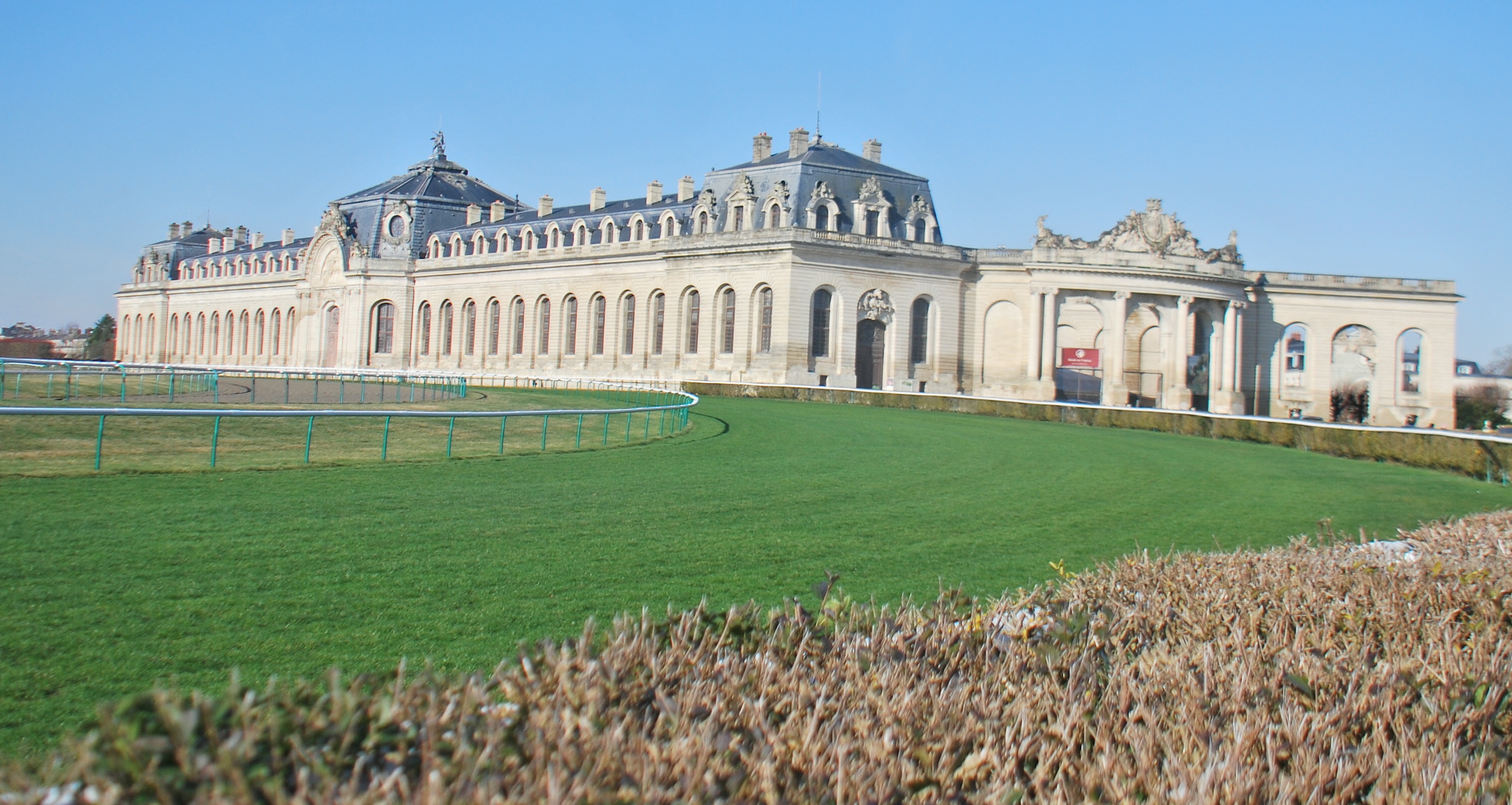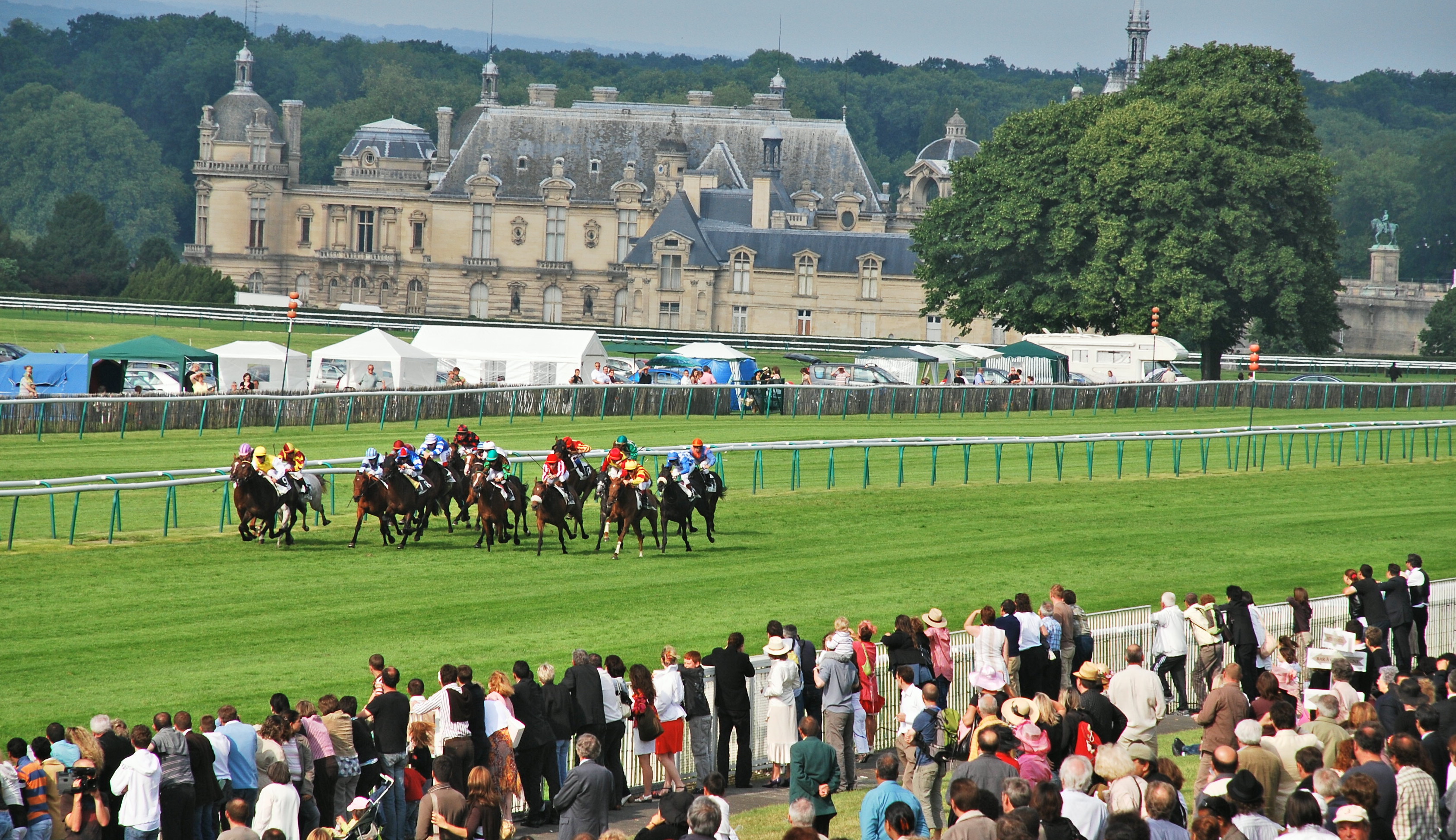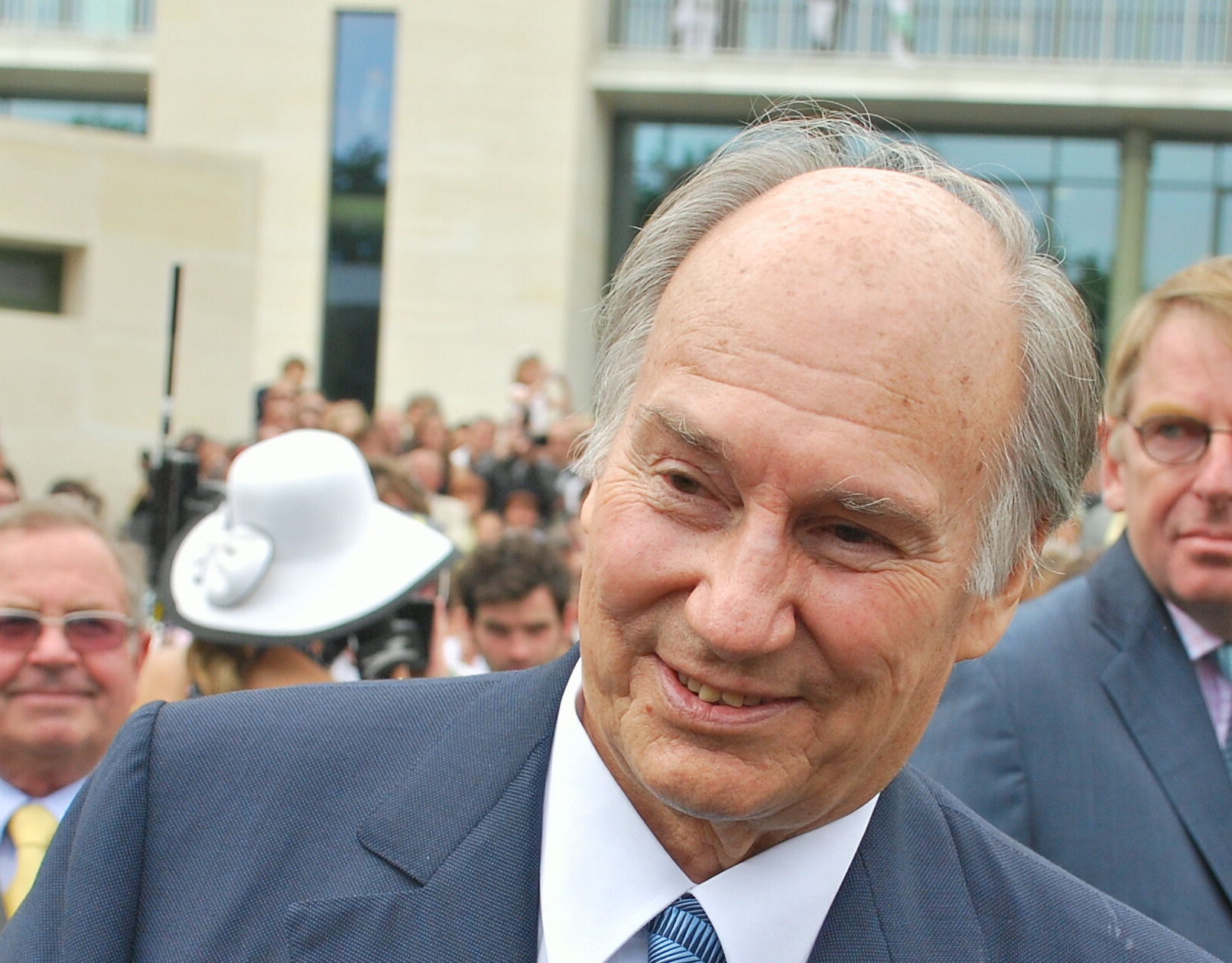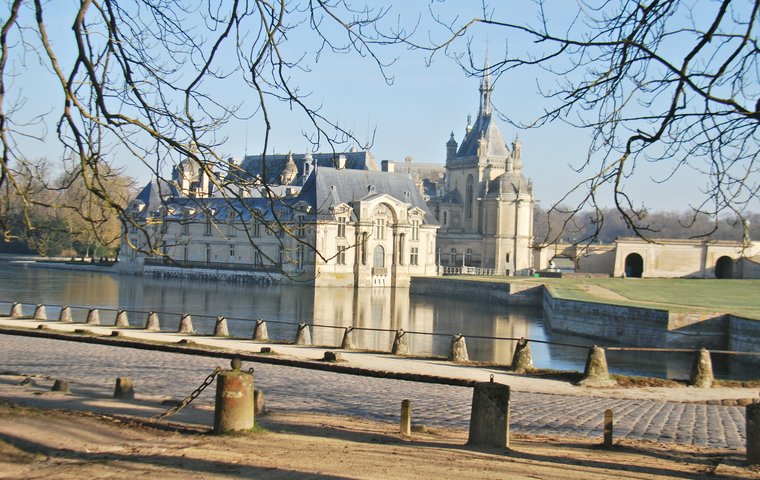
It’s home to not only one of the world’s most iconic racecourses and to busiest training centres, it’s also one of the most important cultural sites in France. But historic Chantilly just north of Paris is in dire trouble these days because of the effects of the Covid pandemic.
The renowned Chateau backdrop and adjacent Grandes Ecuries (grand stables) make Chantilly instantly recognisable to racing folk worldwide.
They were part of an estate owned by Prince Henri d’Orléans, Duc d’Aumale, son of the last King of France, Louis-Philippe. The prince (1822-1897), the greatest art collector of his time, made Chantilly the showcase for his huge number of masterpieces and precious manuscripts. He also gave permission to develop a racecourse on the lawns in front of the Chateau in 1833.
On his death in 1897, his entire estate was left to the Institut de France, an organisation of academics that oversees a large number of historic buildings, on the understanding that his collection of books and paintings would never be moved - and that racing would continue.
The collection is on display in the famous Chateau. The nearby Grandes Ecuries was formerly his stables, housing 240 horses and 500 hunting dogs. The Duc also owned the surrounding forest and a beautiful landscaped park designed by André Le Notre in the Chateau grounds. The same architect designed the Tuilleries gardens in Paris and Versailles.
Now, of course, no spectators - no paying public - can visit any part of the Chantilly estate for either equestrian or cultural reasons. With no income from ticket sales since the second shutdown in October, plus a gap in finances from the first lockdown between March and May, it’s hardly surprising the Domaine de Chantilly recorded an operating loss of €6 million in 2020.
The Chateau is desperately looking to raise funds through donations and deals to offset the losses due to the Covid shutdown.
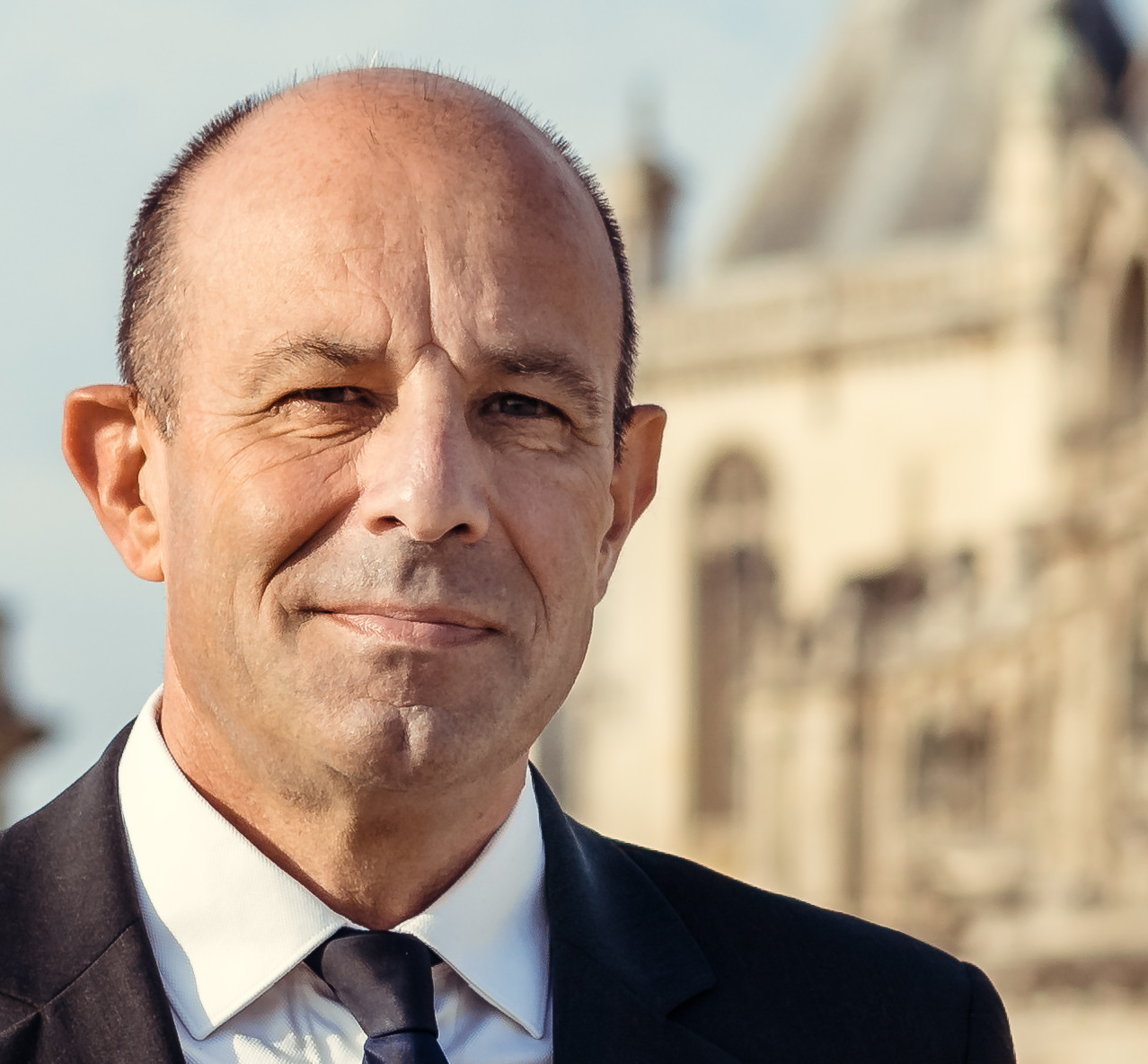 Christophe Tardieu, Administrateur Général du Domaine de Chantilly (photo courtesy Diane Lafon, Domaine De Chantilly), said, “Chantilly’s Chateau estate does not profit from any grant or subsidy. The books are likely to be balanced when the management is sound and dynamic, but not if the Chateau and other sources of income on the estate are closed for health reasons.”
Christophe Tardieu, Administrateur Général du Domaine de Chantilly (photo courtesy Diane Lafon, Domaine De Chantilly), said, “Chantilly’s Chateau estate does not profit from any grant or subsidy. The books are likely to be balanced when the management is sound and dynamic, but not if the Chateau and other sources of income on the estate are closed for health reasons.”
He added, “Revenue from ticket sales fell to €6 million in 2020 and total overall income was €7 million. With €13 million annual costs for overheads and staff, it left a €6 million operating deficit, which can’t be offset.”
Chantilly launched a donation campaign in December to help the estate through difficult times. “It has already raised nearly €174,000. Tardieu said, “It is a low figure compared to our losses but gives a huge boost to our Chantilly deals. The donations are all accompanied by very touching messages of support.”
On top of this, the Aga Khan withdrew for personal reasons in January 2020 from his role as Head of the Fondation pour Sauvegarde et la développement de Domaine de Chantilly, set up in 2005 with the French state, the Institut de France, the Picardy regional authority, the Oise departmental authority and private patrons. The Aga Khan has personally donated €40 million of a €70 million fund in order to carry out preservation work over the past 16 years.
The Institut de France would have been unable to afford the total costs after years of neglect to the Chateau estate, where certain parts date back to the 15th century, without the Aga Khan’s help. “Finding a major patron who will be as generous as HH The Aga Khan will be extremely difficult, and he will undoubtedly remain as the prominent figure for the Chateau in the 21st Century,” said Tardieu.
A major problem for the Chateau and Grandes Ecuries is that, unlike the Louvre or the Palace of Versailles, it is unable to profit from government aid during the period of closure.
“The Domaine de Chantilly does not fall under the umbrella of the Ministry of Culture as the Louvre or Versailles do and so cannot profit from the €614 million of the ministry’s recovery scheme for public buildings,” said Tardeau. “Moreover, as the Chateau does not fall under private law, it can neither profit from guaranteed loans nor from short-term work measures. Since our cash flow is dwindling, finding a solution is critical.”
Tardieu also pointed to the current situation for the 130 employees at the Chateau and Grandes Ecuries. “These are contractual public employees since July 1, 2020. The overwhelming majority of them are at work preparing the reopening. A major clean-up campaign has been ongoing since November.”
With no end in sight short-term for French cultural sites to re-open, things are looking pretty desperate, especially if the closure continues past June into the lucrative summer period.
It must be quite galling for those currently cleaning up the Chateau to see racing still taking place at Chantilly during the pandemic. The racecourse, like the rest of the French racing programme, has been continuing without spectators since October, for the second time this past year, as case numbers started increasing again, though funding is not dependent on spectators attending as is the case with cultural activities.
Off-course pari-mutuel betting is still taking place, though 4,000 of the restaurants and bars that make up the 13,000 PMU off-course outlets are closed due to the restrictions.
In Chantilly, there are still four places where you can have a bet, but many regulars miss going to the track, where 48 meetings on the all-weather and grass are programmed for this year. But, more important, horseracing is still taking place. Several thousand people around Chantilly, where 2400 racehorses are trained, are dependent on it.
Not surprisingly, profit from pari-mutuel betting for 2020 used to fund the sport reduced by €120 million to €640 million. The funding is shared on a 50-50 basis between France Galop for flat and jumps and Le Trot for trotting. The only positive note: Online wagering went over the €1 billion mark in 2020 for the first time.
France Galop has planned to budget for a prize money package of €250 million, in line with 2019, which includes added support for its 2-year-old programme.
For the first two months of this year, prize money will be paid out in full, but as there is a possibility of several more months of restrictions, a reduction in purses and premiums has been introduced from March 1 as a precaution against the inevitable fall in betting revenue. The objective would be to pay out the difference at a later stage if possible.
This was the case last year, when France Galop budgeted for €248 million in prize money and only €185 million was paid out due to racing being suspended for the two months from March to May. Purse cuts were introduced when the sport resumed to ensure staying within budget for the rest of the year.
As it turned out, France Galop’s prudent policy paid off, as it actually made a €15 million overall surplus for operational costs. This enabled France Galop to pay out a supplementary increase in prize money and premiums on January 27-29 for races that were subject to reduced purse levels from May 11 to December 31 in 2020.
The French Government has suggested the current restrictions, which affect restaurants and bars, will remain in place until June. But a bigger concern for Chantilly is if the ban on spectators is still in place in some form by the time of the Prix du Jockey Club and Prix de Diane meetings in June.
Big paydays
These are the two big paydays for the town, with at least 30,000 normally attending the Diane alone. Last year, the two races were held on the same day behind closed doors, which meant a considerable loss of income for the racecourse, as well as for restaurants, bars, hotels and Chateau.
It could be said equally that we are extremely fortunate racing is still taking place at Chantilly at all, as it was close to being terminated 27 years ago.
Back in 1994, the Tribune stand was in a poor state, having been left virtually untouched since the Duc d’Aumale’s death. At the same time, the Société d’Encouragement (predecessor to France Galop), which rented the track from the Institut de France, was looking to close the track as a way of reducing costs.
This caused uproar among the townspeople and the racing fraternity. Nobody could understand how senior management at the Société could contemplate closing the world-famous track. A closure would have undoubtedly had a negative effect on the training numbers in the area and be an insult to all the hard work of those historic pioneer racing staff who arrived, largely from England, in the 1830s and 1840s to develop racing and training in Chantilly.
I remember thinking at the time: Could you ever imagine the Brits or Americans contemplating doing the same thing with their flagship tracks at Epsom or Churchill Downs?
Finally, a letter sent to the Société by the Aga Khan, who lives on the nearby Aiglemont estate, made them think again.
The unique racecourse was a marketing dream with its Chateau backdrop, yet at the time it staged just seven meetings a year, was clearly under-used and not cost effective. It needed a far more professional approach than was evident then.
The Aga Khan came to the rescue again, quickly identifying two consultancy companies to draw up a plan for renovation. In 1998, this plan was further developed by the formation of a ‘Sustainable Development of Chantilly’ group, whose members consisted of France Galop, the community villages of the Chantilly region, the Institut de France, the government, Picardie Regional Council, Oise Council, the town of Chantilly and the Aga Khan.
At a cost of €24 million, work began on renovating the grandstand and building a new panoramic restaurant at the track. The first meeting after the changes was on May 28, 2004 - 170 years after the first race at Chantilly on May 15, 1834.
The modernisation was completed by 2007, when the adjacent Aigles road was re-routed further into the forest so the parade ring could be moved behind the stands and a new weighing room and parking area built. In 2011, an all-weather track was added inside the existing one so that meetings could take place all year round to produce more cost-efficient use of the track.
Now the Chateau, a cultural treasure that has given such pleasure to so many visitors over the years, is looking for funding to stave off yet another major threat to its existence.



